When Greg Hart’s family moved to Mangarara Station in Central Hawkes Bay in the mid 1990s, they shot 3 possums on their first night at the property – in a cabbage tree growing at the front door. How times have changed. Greg has now taken over the farm from his parents and his oldest son George, 14 years old, has never seen a possum on the farm.
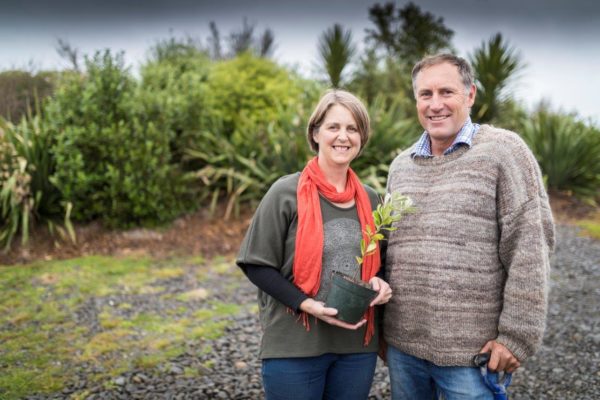
“The Hawkes Bay Regional Council had a massive campaign to eradicate possums,” Greg explains. “They did an outstanding job. They did the initial knockdown and we do the ongoing control with bait stations.”
Possums haven’t been an issue for years. Rats and mustelids are now the target of Greg, Rachel and their family’s latest predator control at Mangarara – helped by some key sponsors and supporters, including Air New Zealand who have been partnering Mangarara – The Family Farm’s ecological restoration efforts since 2008.
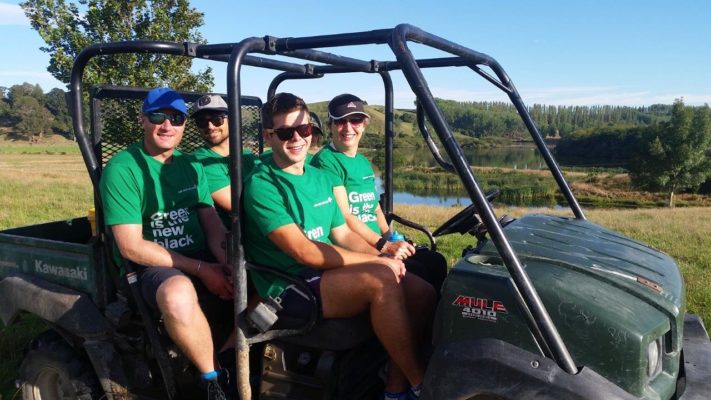
Mangarara is not your typical New Zealand family farm.
“Having children was a significant turning point in our lives,” Greg explains. “We started thinking about the future, about sustainability and the quality of food. I read a lot of books, listened to podcasts and did courses, learning about alternative ways to produce healthy food, that is better for the soil, better for the animals, better for the people and ultimately better for the planet. What I was learning was very different from anything I had been taught while studying agriculture at university.”
Greg realised that big changes need to happen to the way we farm.
“Pastoral agriculture is the backbone of New Zealand,” he says, “But it relies on finite resources in the form of fossil fuels and imports of phosphates from North Africa. I realised the need to shift from an agricultural system totally reliant on these finite resources to a self sustaining system. I started learning about biological agriculture, organics and regenerative agriculture. Being sustainable isn’t good enough,” he adds. “We need to regenerate the earth, build the health of our soil and increase the soils ability to sequester carbon from the atmosphere. Then biodiversity increases and ecosystems are restored. Soils are the planet’s biggest sink of carbon.”
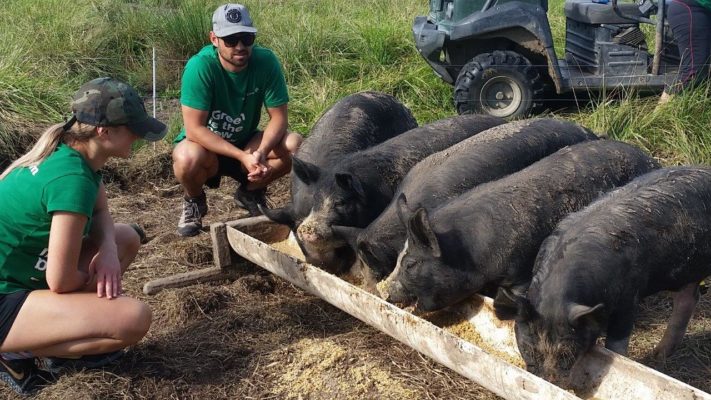
Trees are a key part of that carbon-fixing ability – and since 2008, a total of 106,000 trees have been planted at Mangarara, thanks, in part, to a very successful partnership with Air New Zealand. Greg explains how that relationship came about.
“I had been clocking up a few airpoints with travel,” Greg explains, “So I rang Air New Zealand to see if they were interested in my idea to swap airpoints for tree-planting. At the time they were already planning to set up the Air New Zealand Environment Trust, so instead of swapping airpoints, we became the first recipient of funds for the Air New Zealand Environment Trust.”
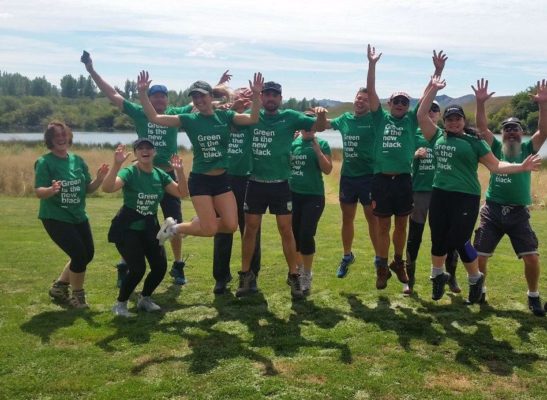
Mangarara – The Family Farm was awarded 3 years funding for tree-planting and 85,000 trees were planted by contractors, volunteers and family members. About 60,000 of those trees were natives. In return, Mangarara was opened to the public. But tree-planting didn’t stop at the end of the 3-year funding period. Greg and his team have continued to raise funds and plant trees – a total of approximately 106,000 trees to date. A strong relationship with Air New Zealand staff has also continued.
“The money for the trees was part of the relationship,” says Greg, “But it has also been about the friendships we have made, meeting Air New Zealand personnel and working together. We still get at least 2 visits per year from Air New Zealand staff. The Air New Zealand Green Team still help with planting and they helped put out predator traps.”
Trapping rats and mustelids in the existing native forest is a recent development and a natural follow-on from the restoration tree-planting. Greg credits Radio New Zealand National presenter Jesse Mulligan with prompting him to take that next step.
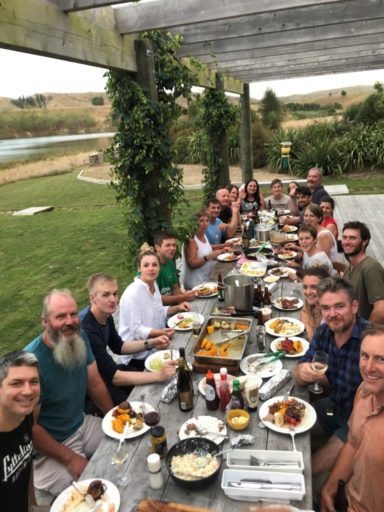
“Jesse Mulligan was holidaying in Hawkes Bay last year and came out with his family to visit,” Greg explains. “We took them out to feed the animals and showed them around. I listen to him on the radio, so knew that he’s keen on predator control.”
Jesse liked what he saw but was keen to encourage Greg and the team to add predator control to the possum control and restoration work they were already doing. Jesse enlisted the support of Hawkes Bay Regional Council and Air New Zealand to co-purchase 30 Goodnature A24 rat & stoat self-resetting traps for the native forest area.
“In mid-February this year, three guys from Goodnature came along and talked about what we needed to do and why, then together with the Air New Zealand Green Team we worked to install the traps,” says Greg. “One month prior to that we’d put out tracking tunnels with peanut butter for 1 night. Only 1 in 20 tunnels had footprints, so numbers looked low with the possum bait stations potentially killing some rats. But once we put out the A24s we started killing quite a few rats, stoats and hedgehogs. We’re not sure exactly how many as we don’t have counters.”
Dead rats are often scavenged without being seen, so those dead rats that are found are only a portion of the total kill.
“It’s really exciting,” Greg says. “The forest was grazed with stock for over 100 years and had no under-canopy. Then for the last 20 years we’ve excluded livestock and got rid of possums and have witnessed a big increase in birdlife and tree health. We are excited to see what other benefits we notice from reduced numbers of these other pests.”
As well as removing predators and competitors, different grazing management in the pastures adjacent to the forest also contributes to the birdlife.
“Long pasture grazing encourages insects and spiders to flourish,” Greg explains, “We often see big flocks of swallows when we’re shifting cattle.”
The next step in predator control will probably involve the lake area.
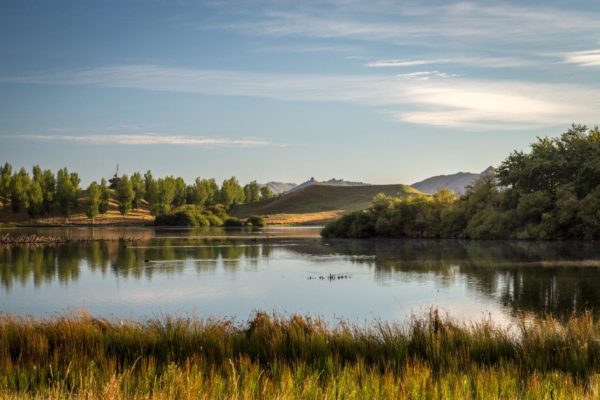
“We hope to continue with the Goodnature traps and get some round the 80 acre Horseshoe lake on the property. It has been fenced in the last few years and we’ve had a planting project there with Million Metres Streams,” says Greg. “It has wonderful waterfowl and other birdlife and we are keen to take advice on controlling rats and stoats and protecting ground-nesting birds. Cats are also an issue,” he adds.
An eco-lodge has been built overlooking the 30 hectare lake and has been open for about 3 years.
“The Mangarara eco-lodge is about connecting people back to the land and where their food comes from,” says Greg. “People can come, experience the farm and re-connect with a healthy food production system. With better understanding and knowledge we can help bring about more change.
The diversity of trees, insects, and wildlife brings a lot of interesting people to the farm – and that also stimulates our lives. Our farm ethos is about optimising life through diversity, diversity, diversity.”

